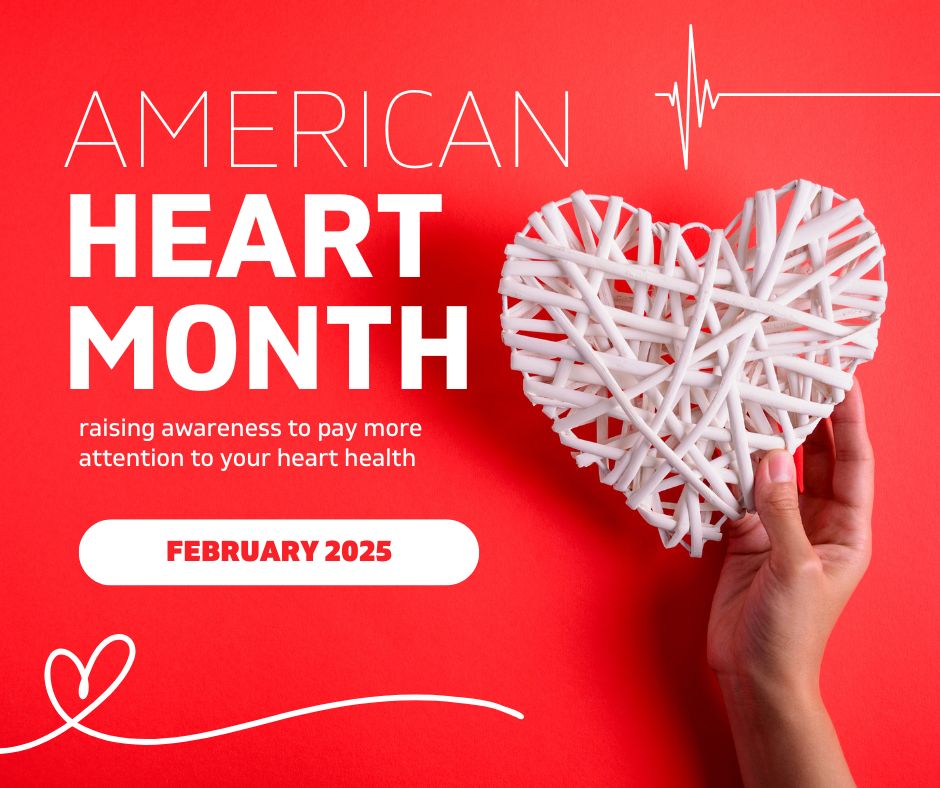By Nancy Alexander, PT, CSCS
Heart disease is the leading cause of death in the United States, according to the NIH (National Institutes of Health) National Heart, Lung, and Blood Institute. To increase heart health awareness, February is celebrated as American Heart Month. Every February since 1964, the NIH and other organizations have teamed up to provide education and guidance to help you take action and reduce your risk of heart disease. I’m happy to support them.
Lifestyle, age, family history, high blood pressure, high cholesterol and smoking are well-known risk factors of heart disease. Sure, there are some you cannot change. But let’s focus on what you can change and better understand their impact on you.
High blood pressure (or hypertension)
According to the NIH, blood pressure that is consistently higher than 130/80 mmHg can cause serious health problems. Left uncontrolled, it can affect your heart and other major organs including your kidneys and your brain.
Hypertension is often called a “silent killer” because it usually has no symptoms. The only way to know if you have it is to measure it. This can be controlled with lifestyle changes and/or medicine to reduce your risk for heart disease and heart attack.
High cholesterol
Your body makes all the cholesterol you need in your liver. If you take more in than your body can use, it is stored in the walls of your arteries, including those of the heart. This narrowing leads to decreased blood flow to the heart.
There are two types of cholesterol. HDL is good cholesterol. LDL is bad cholesterol because it can cause plaque buildup in your arteries. A simple blood test can determine your levels of each.
Smoking
Tobacco damages blood vessels, increases blood pressure and raises cholesterol levels. It is also the leading cause of lung cancer, responsible for about 90% of cases in the United States (CDC).

Take Action
Now that you know the risk factors you can change, it’s time to learn the how to take control of your health now. Here are six strategies to improve the health of your heart:
1. Be active
Adults should spend at least 150 minutes (2 ½ hours) each week doing physical activity. You can start with just 10 minutes at a time.(NIH)
Move. Walk. Take the stairs if you are able. Take every opportunity to be more active.
Participate in activities that make your heart beat faster. Cardiovascular exercise such as walking, biking, jogging, and even swimming can train your heart to work more efficiently. According to the NIH, strength training activities can help, too.
Please consult with your physician to discuss safe ways for you to get moving now.
2. Eat better to control your cholesterol
Control cholesterol by eating a heart-healthy diet that is low in saturated fats. These can raise LDL cholesterol levels.
Eat a diet rich in whole foods including vegetables, fruits, whole grains, lean proteins, and healthy fats.
Read food labels and pick the foods lowest in saturated fat, sodium, and added sugars.
Apps on your phone can help you eat well. For example, Yuka is an independent app that contains information on food and cosmetic products in order for you to know their impact on your health. Simply scan the product’s bar code into the app and find out how healthy it is.
Limit your alcohol consumption to reduce cholesterol: men to 2 drinks/day, women to 1 drink/day.
3. Stop smoking
It’s never too late to quit smoking. Doing so not only reduces your risk of heart disease, it helps reduce your risk of cancer, lung disease and other smoking-related illnesses. Consult with your healthcare provider for programs and products that can help you quit. Call 1-800-QUIT-NOW (1-800-784-8669) for assistance now.
4. Get enough high-quality sleep
Aim for 7-9 hours of sleep a night. Try to go to bed and wake up at the same time each day. Put down your phone and limit blue light a few hours before bedtime.
5. Manage stress
Use relaxation techniques like deep breathing and meditation to lower your anxiety and stress.
Practice mindfulness. Reach out to others for companionship. Regular exercise can help you reduce stress as well.
6. Control blood pressure
Keep your blood pressure in a healthy range and keep track of your numbers. Monitor your blood pressure regularly and be sure to have your blood pressure checked each time you visit your doctor.
Follow the DASH eating plan. DASH stands for Dietary Approaches to Stop Hypertension. Favorable foods include plenty of fruits and vegetables, fish, poultry, lean meats, beans, nuts, whole grains, and low-fat dairy. It also calls for reducing your sodium intake as the lower your salt intake, the lower your blood pressure. 2300 mg of sodium per day is considered the highest acceptable level in the DASH plan. Men currently average 4200 mg/day while women average 3300mg/day. Lowering your salt intake down even further to 1500mg per day is even more effective at reducing blood pressure.
Healthy heart strategies have other advantages, too. Follow these guidelines and your rewards will be many. Your risk for cancers will be reduced. Diabetes can be avoided. Your kidneys will function better. Your brain will function better and you can even reduce your risk of getting dementia. The benefits are remarkable.
Lifestyle changes are key in improving your heart health. Now is the time to act and love your heart. Better health is within your control. Take good care of your heart, and your heart will take good care of you.
Sources:
https://www.nhlbi.nih.gov/education/american-heart-month
https://www.nhlbi.nih.gov/education/heart-month/fact-sheets

Leave a Reply